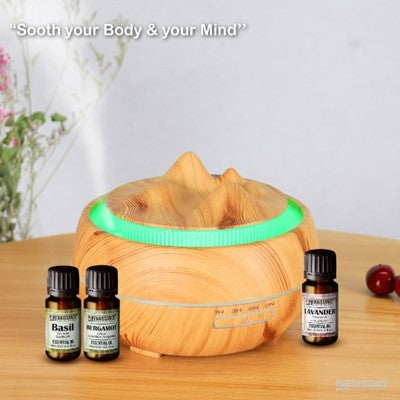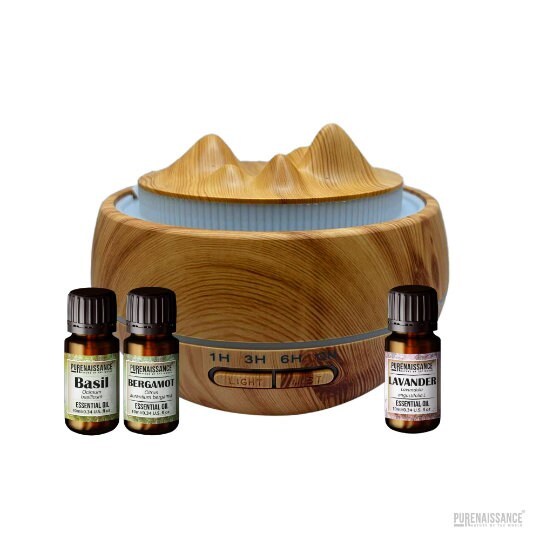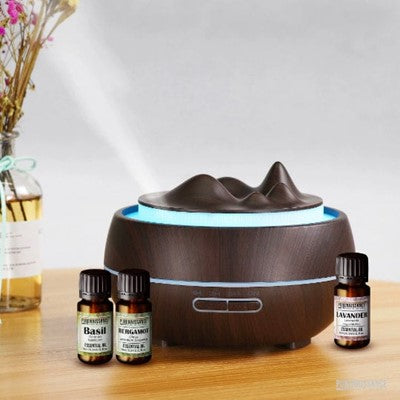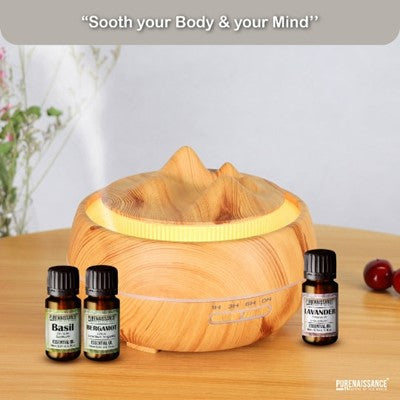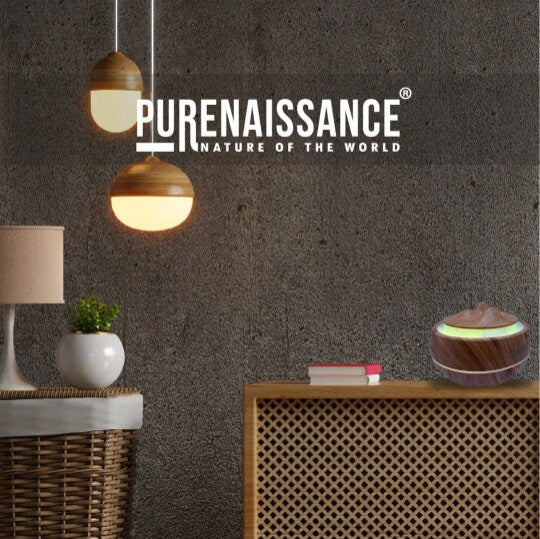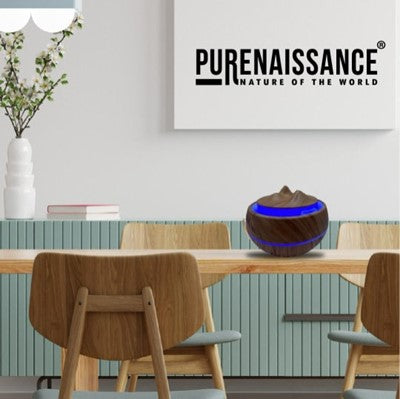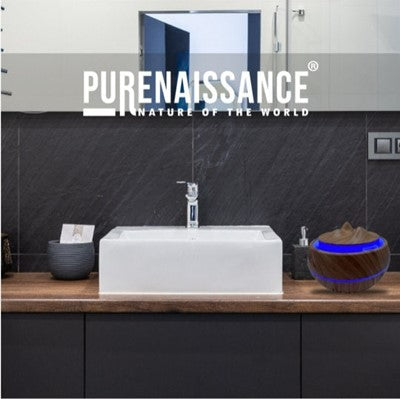Purenaissance
Aromatherapy Essential Oil Diffuser by Purenaissance for Domestic and Professional Use, Includes Three 10ml Bottles of Essential Oils.
Aromatherapy Essential Oil Diffuser by Purenaissance for Domestic and Professional Use, Includes Three 10ml Bottles of Essential Oils.
Couldn't load pickup availability
This beautiful diffuser adds an elegant touch to your house or office decor.
- Easy to use.
- Adjustable Aroma Intensity – Can fill a small space or up to a 20 x 30 square meter area. Non-slip base, 7-colored LED light, easy to maintain and keeps your apartment's decor beautiful.
-
Zen and elegant home decor.
Fits in a variety of settings, including living rooms, bedrooms, bathrooms, conference rooms, hotels, yoga clubs, and offices. Enjoy the fresh air and atmosphere you desire.
Type: 21WX-YX513
Voltage: AC 110V, 60HZ; DC 24V/0.5A
Material: PP/ABS
Capacity: 400ml
Color: Light wood
Product Size: 168mm (W) x 115mm (H)
Product Weight: 520g / 330g
Essential Oils Included:
-
1. Pure Bergamot Essential Oil Purenaissance (10ml)
Bergamot essential oil is known for its digestive qualities and fresh, floral, lemony scent. It’s often used in cooking for drinks, sorbets, and confectionery, as well as with white meats and fish for an exotic flavor. Bergamot oil is extracted using a special cold-press technique, making it a high-quality product.
Origin: France
Processing Method: Cold Press
Family: Rutaceae
Color: Green to Greenish Yellow
Odor: Citrus cologne -
2. Pure Lavender Essential Oil Purenaissance (10ml)
Lavender essential oil is widely used for its calming and therapeutic properties. Known for its soothing, floral scent, lavender has been valued for over 2,500 years in various cultures. It’s used in aromatherapy for relaxation, skin care, and as an antibacterial agent.
Origin: Provence, Spain
Processing Method: Steam Distillation
Family: Lamiaceae
Color: Light Yellow
Odor: Floral, herbaceous -
3. Pure Basil Essential Oil Purenaissance (10ml)
Basil essential oil is known for its fresh, spicy, and slightly aniseed fragrance. It’s used in cooking, beauty, and therapeutic applications. Originating from India, basil oil has a refreshing, herbaceous scent that promotes relaxation.
Origin: India
Processing Method: Steam Distillation
Family: Lamiaceae
Color: Clear Yellow
Odor: Fresh, spicy, with a hint of licorice
Share
